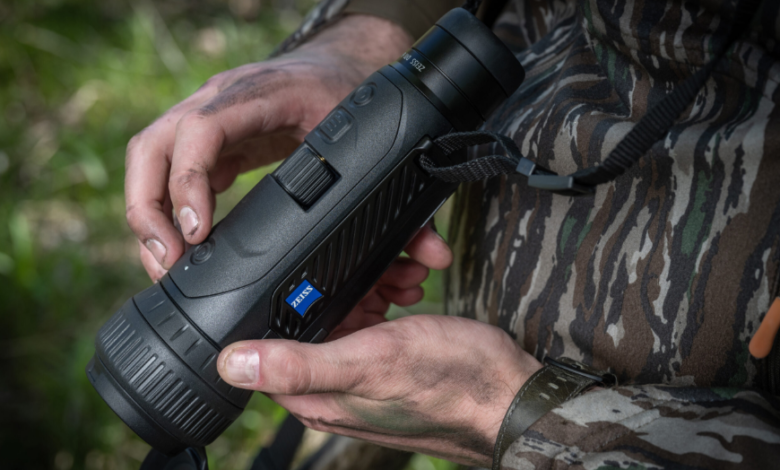The Power of an Infrared Monocular in Low-Light Exploration

In today’s technologically advanced world, the infrared monocular has become an essential device for a wide range of outdoor and tactical applications. This compact yet powerful tool allows users to see in complete darkness by detecting infrared light, revealing details that the human eye cannot perceive. From wildlife watching and nighttime navigation to security patrols and military operations, the infrared monocular offers clarity, safety, and enhanced awareness when visibility is limited or nonexistent.
This article explores how the infrared monocular works, its core applications, and the reasons behind its increasing popularity among professionals and enthusiasts alike.
What Is an Infrared Monocular?
An infrared monocular is a single-lens optical device designed to provide vision in low-light or no-light environments. It uses infrared (IR) technology to amplify the available light or to detect heat signatures, depending on whether it’s a near-infrared or thermal-based system. Most infrared monocular fall under night vision devices that amplify low-level ambient light, such as starlight or moonlight, while others operate using active infrared illumination to provide a clear image even in total darkness.
Unlike binoculars, a monocular is used with one eye, making it lighter, more compact, and easier to carry. It’s perfect for users who need quick, efficient observation on the move.
How an Infrared Monocular Works
There are two main types of infrared monocular systems:
- Near-Infrared (NIR) Night Vision: These monoculars work by collecting tiny amounts of light, including near-infrared light, and amplifying it through an image intensifier tube. The output image is often green due to the phosphor screen, which the human eye can interpret easily in low-light settings.
- Thermal Infrared (Far-Infrared): These detect radiation emitted by objects in the form of heat. They do not require any visible light and work effectively in total darkness, heavy fog, or smoke. Though technically different from traditional night vision, thermal IR monoculars are often grouped under the broader category of infrared vision tools.
Some modern monoculars combine both technologies to offer hybrid capabilities, providing users with enhanced flexibility across varying environmental conditions.
See also: How AI Face Swap Technology Is Shaping Influencer Marketing
Key Applications of Infrared Monoculars
1. Nighttime Wildlife Observation
One of the most popular uses of an infrared monocular is in wildlife watching. Animals are often most active at night, making them hard to track with the naked eye. With an infrared monocular, researchers, photographers, and nature lovers can observe nocturnal species without disturbing their behavior or relying on visible light that might scare them away.
2. Hunting and Scouting
Hunters use infrared monoculars for spotting and tracking game after dusk. These devices allow them to scan open fields, forests, and brush without flashlights, making their presence less detectable. Thermal-based infrared monoculars are especially useful for detecting animals concealed by foliage.
3. Security and Surveillance
For security guards and law enforcement, the infrared monocular is a valuable tool during nighttime patrols or surveillance missions. It allows for silent and covert observation of buildings, fences, or remote areas, identifying any unauthorized movement or suspicious activity.
4. Search and Rescue Operations
Infrared monoculars help search-and-rescue teams locate missing persons in wilderness areas, especially at night or in low-visibility conditions. The ability to detect human heat or movement can drastically reduce the time needed to find individuals in dangerous situations.
5. Boating and Marine Use
Navigating waters after sunset can be dangerous due to low visibility and the risk of collisions. Infrared monoculars allow boaters to detect other vessels, floating debris, or people in the water. Their compact size makes them easy to keep onboard for emergencies.
6. Tactical and Military Use
In military operations, infrared monocular devices serve as vital equipment for night-time reconnaissance, navigation, and perimeter defense. Their ability to detect movement or heat signatures through darkness gives soldiers an operational advantage during night missions.
Advantages of Using an Infrared Monocular
- Complete Darkness Operation: Whether using near-infrared amplification or thermal detection, infrared monoculars function even in the absence of visible light.
- Compact and Portable: Smaller than binoculars or multi-lens systems, infrared monoculars are perfect for handheld or helmet-mounted use.
- Silent and Stealthy: These devices allow for undetectable observation—ideal for surveillance, hunting, or wildlife watching.
- No Need for Ambient Light (Thermal Models): Thermal infrared monoculars detect heat, so they work even in conditions where no natural light is available.
- Multifunctional Use: From nature watching to military surveillance, these tools adapt to countless professional and recreational needs.
What to Consider When Choosing an Infrared Monocular
If you are planning to buy an infrared monocular, consider the following specifications to ensure it fits your intended use:
- Generation of Night Vision: Gen 1 devices are more affordable but offer lower resolution and range. Gen 2 and Gen 3 offer improved clarity, light sensitivity, and image brightness.
- Sensor Resolution: For clearer images, look for higher sensor resolution. It ensures finer detail, especially at greater distances.
- Detection Range: Depending on your usage—whether it’s for close-range wildlife observation or long-range tactical surveillance—make sure the monocular has an adequate range.
- Battery Life: Long-lasting batteries are essential for extended outdoor missions. Look for models that offer at least 5 to 8 hours of continuous use.
- Built-In IR Illuminator: Many night vision monoculars include a built-in IR illuminator that enhances visibility in total darkness.
- Durability and Weatherproofing: If you plan to use it in rugged terrain or unpredictable weather, choose a device with water and dust resistance (IP65 or higher).
Leading Brands in Infrared Monocular Technology
Several companies manufacture high-quality infrared monocular devices that cater to a variety of professional and personal needs. Some of the top brands include:
- FLIR Systems: Known for high-end thermal monoculars and night vision products.
- Bushnell: Offers affordable and user-friendly infrared monoculars for beginners and hobbyists.
- ATN Corp: Produces advanced smart monoculars with video recording and streaming capabilities.
- Pulsar: Delivers premium monoculars with exceptional image quality, often used by professionals.
- Sightmark: Offers rugged models suitable for tactical and outdoor use.
Conclusion
The infrared monocular has rapidly become an indispensable tool for anyone working or exploring in low-light conditions. Its ability to reveal what is hidden in the dark—without relying on visible light—makes it incredibly valuable for a wide array of applications, from wildlife observation to tactical defense.
With advancements in infrared sensor technology and digital imaging, today’s monoculars are more powerful, compact, and affordable than ever before. Whether you’re a hunter, camper, law enforcement officer, or night photographer, investing in an infrared monocular can significantly enhance your vision, awareness, and safety during nighttime activities. As this technology continues to improve, its role in both recreational and professional environments will only grow stronger.





